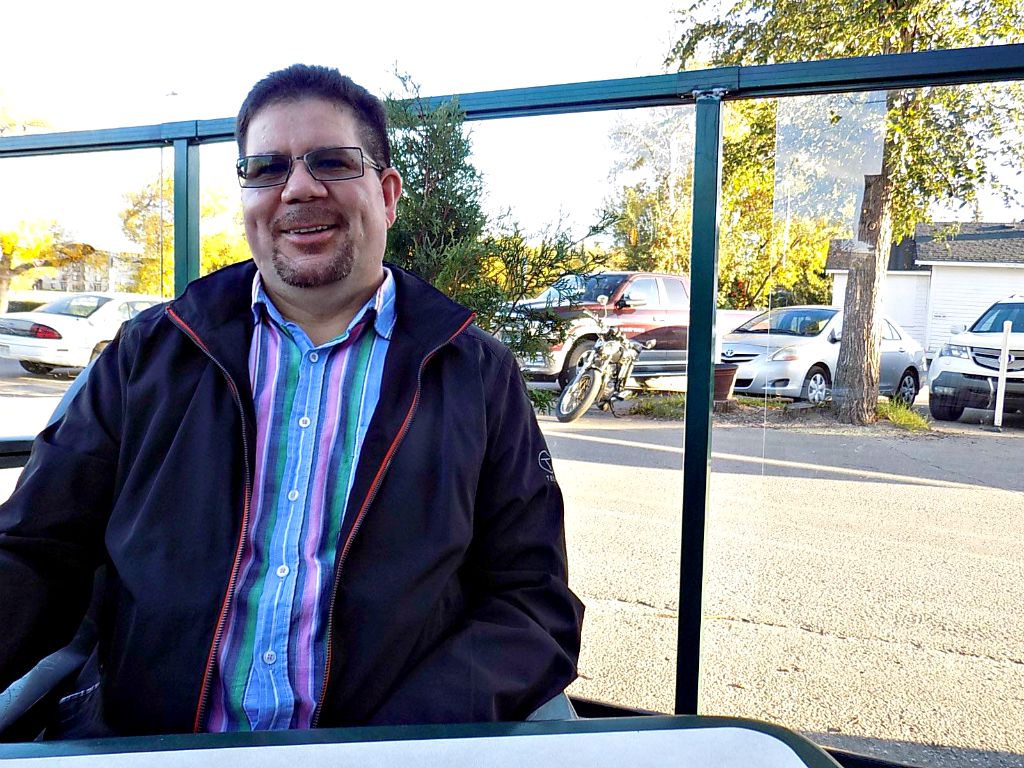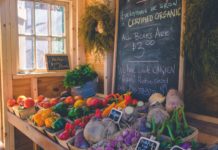When I first met Father Ciro, I had to be convinced that he was the spiritual leader of the entire Latin American community in Saskatoon, Saskatchewan. He was wearing a big sombrero costeño while sitting at a table during the Independence Day celebration, eating sancocho.
I had been in Saskatoon for about a month and I was curious about what the Latin American dynamic was. Since then I’ve written several articles in a mini-series about Colombians of Saskatoon, stories about university exchange student Erni Ramos, and PhD students Andres and Marta.
I’ve tried to acquire a taste of Saskatoon myself, but I knew that I’d never know what to think unless other Latin Americans told me about their experiences, and they’ve been particular: Erni spoke of his time as a college student, in dorms, with friends; Andrés and Marta spoke of the difficulties of changing your lifestyle and the hardness of winter, and Maru spoke of what it takes to start a business up from scratch when you’re an immigrant.
This is Father Ciro’s story.
About Father Ciro
Father Ciro Pérez has lived in Saskatoon for about six years. He is the charismatic priest at St. Mary’s church and mainly preaches in English, though he has a Latin American community to whom he gives mass on Sundays.
However, Father Ciro hasn’t always known English. He was ordained in Bogotá. He came to Saskatoon after a priest from Bogotá announced he couldn’t take over St. Mary’s and they searched for opportunities for their Spanish-speaking community.
He worked for eight years in Colombia in very diverse places like Putumayo and Urabá on missions, but was later chosen specifically as a Spanish-speaking priest to take over the community in St. Mary’s.
Over the course of a few months, he got more comfortable with the language, though when I asked how long it took him to learn he answered that he still learned more every day.
He keeps up with Colombian politics and happenings and has no secure plans for the future, like anyone in the church.
These are his words about his experience going to Canada and getting to know the people for whom he was brought over.
His Diverse Latin American Community
The Spanish-speaking community is quite varied. When I arrived it was made up of about ten people and it expanded and shrank every once in a while. They had mass around once a month. But now, we have a great community and have mass once a month. We have lots of families that we support spiritually and in many other ways.
To help them, we need to know their stories, so I eventually learned that the first Latin American community to arrive in Saskatoon was from Chile, looking to escape the dictatorship in the 70s. Very few families arrived from Argentina, but more than 350 families from Chile that came at the time, many Chileans returned after the death of Pinochet.
Many came from El Salvador, some from Argentina, around the 90s Colombians began arriving with their families.
At the time, guerrillas and paramilitaries, the protagonists of the Colombian conflict were stirring up the country. Some people lacked opportunities, some left the United States looking for better jobs or less discrimination, or in 2009 when the economy crashed.
Finally, a group of Mexicans, Bolivians and Argentinians arrived in Saskatoon. I’ve been able to hear all their stories.
I’ve heard about the people that were fooled into calling a toll-free number that promised them citizenship in Canada because the country needed immigrants, people who lost all their savings looking for a better life.
Saskatoon as a Home
The city is somewhat large geographically, but the amount of people that populate it isn’t great. It really is a small town in a big territory. I was surprised by the difference coming here. The culture, of course, is very different, but I don’t complain.
I tell my congregation:
“You complain about the cold, you complain about people being dry, but when you start doing that, think about when you go to the supermarket. You don’t choose rotten ingredients, you don’t choose things you don’t want. Do the same: choose good things to take in.”
It’s my job to make people better, happier. So I choose the good things. I don’t have time to see the bad. I have a congregation to lead spiritually.
Getting Acclimated
I got here during the Fall, in September. The temperature was between 19 and 25 degrees (Celcius) I wasn’t too impacted by that.
I was estranged by the language barrier.
I was used to a different kind of city. There’s no large buildings here, no traffic jams in the center. Here, they had large roads. I felt somewhat like in El Llano [a region of Colombia]. Everything was vastness.
We are so used to Carreras and Calles in Colombia. Here, streets have names. Idylwyld, Broadway, some of these streets have indigenous names that are unpronounceable!
The city is young, as is the country. It is a country of immigrants, without a doubt. They are generous, as a nation.
Something I noticed specifically was their trusting nature. In Colombia, we ask people to prove we can trust them. Here, you’re trusted until you prove you can’t be. You are pushed to continue earning that trust by being honest. This is something I had fought for endlessly.
Here, everyone has a chance to work, everyone has a chance to eat. You’re trusted to take the opportunities at your reach.
I loved the years working in underprivileged communities in Colombia. It was beautiful, but it really broke my heart to see corrupt politicians take advantage of those people that I was trying to help.
Learning the Language
I learn English every day. I am still learning. I have a handle on it and I understand people as much as I need. Every day I have mass in English. We work with a school, with a hospital, with underprivileged people. So I need English a lot more than I need Spanish here.
However, even in Spanish we have misunderstandings. Recently after arriving, I wanted to welcome the Latin American community and get to know them so we had a little get-together right after church, there in the temple, where we offered snacks and coffee. As you know, we say ‘tinto’ in Colombia for coffee. So after mass, I asked everyone to join me for snacks and tinto.
Effectively, quite a few people showed up to meet me. I was thrilled! People started coming up to me with curiosity to ask “Where’s the tinto?” and confused, I pointed to the coffee and said, “Did we run out?” only to realize that they were expecting red wine, as they call it in several countries “tinto” which began my crash course for learning different Latin American expressions and habits.
Helping the Immigrant Community
We have special place for refugees and immigrants. When you arrive somewhere there are things that you need to learn: how to take the bus, where to go grocery shopping, how to pay for certain things, or open a bank account, get a job, and so on.
We’re there to orient these people that come for a wide variety of reasons but all are in a common place of disorientation.
Of course, there are plenty of organizations that help you through that, especially through the financial side.
We match the financial support with the spiritual support. Your bases shift when you have such a big move. Your foundation has shifted, so your spirituality needs support as much as any other part of your life.
Our Latin American culture is about supporting our youth for a prolonged period of time. A lot longer than other cultures.
When you move you start questioning everything. Why do I identify with the things I do? It makes you become a better person and we’re there to help through the transition of making more money but having more expenses.
Money isn’t anything, really, when you come down to it. That’s what we try to let people understand. It’s not paradise, it’s stability that we have to strive for in this new territory.












